Baladi
Intro
Also called Egyptian Horse the Baladi is an Egyptian horse of questionable bloodlines.
Origins
The Egyptian Horse is no longer an individual breed as it once was. There has been significant “Arabization” of the indigenous horses of Egypt, due to the short distance between Arabia and the Nile. The resulting animals come from a combinations of Arabian bloodlines and are unable to be registered.
An influx of English Thoroughbred blood was added for increased speed & size but because of their lack of papers these animals are shunned by breeders & tribesmen.
Although they are still magnificent animals and often faster over short distances, (but not as hardy over distance as the pureblood Arabian).
Features
Average height 14.3 hands
Physique
Short, dished and refined
Small muzzle with large nostrils
Big expressive eyes
Short curved ears
Small muzzle with large nostrils
Big expressive eyes
Short curved ears
Temperament
Spirited
Intelligent
Bold
Intelligent
Bold
Use
Racing
Pleasure
Showing
Pleasure
Showing
Balearic Horse
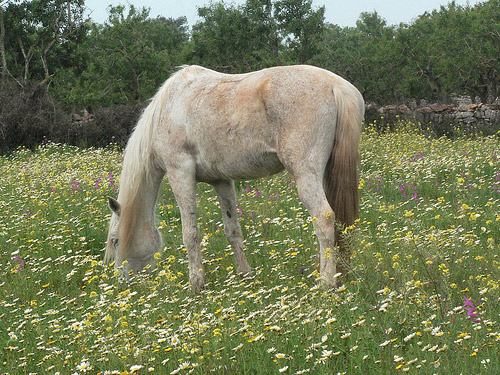
Intro
This breed is found on the island of Majorca off the southern coast of Spain. Unfortunately very few formal records have been kept on the Balearic horse. That combined with their isolation has kept their bloodlines pure and their numbers down.
Origins
One of the rarest breeds still alive today, the Balearic horse is of unknown, yet ancient origin. The breed is distinctly different from other Iberian breeds, even those on neighboring Belearic islands.
Some believe that the breed is descendant of the horses of Ancient Greece because of their likeness to the animals portrayed in Greek artifacts and art.
Features
Average height 14 hands
Physique
Small head with convex profile
Short, thick, arched neck
Slender legs
Short, thick, arched neck
Slender legs
Traditional Colors
Use
Farm animal
Transportation
Harness horse
Riding horse
Show horse
Transportation
Harness horse
Riding horse
Show horse
Bali Pony
Intro
Found on the Indonesian island of Bali, this pony is an incredibly healthy and self-sufficient animal. Their size, strength and stature is more a product of the local needs than any real selective breeding.
Origins
The origin of the Bali pony is unknown, however they are thought to have been brought to Indonesia by the Chinese in the 6th century. These original bloodlines may have been crossed with horses from both India and the Netherlands during the 18th century.
Lack of any serious breeding program has left their confirmation quite unrefined, but given them a great deal of natural strength through natural selection. Healthy and self-sufficient, these animals rarely require shoes because their feet are so hardy.
Features
Average height 11.3 – 13 hands
Incredibly strong for their small size
Incredibly strong for their small size
Physique
Head is large with straight profile
Small ears and almond shaped eyes
Short, straight neck
mane is bristly and stands upright
Short, upwardly curved back
Legs are strong with good joints and hard hooves
Small ears and almond shaped eyes
Short, straight neck
mane is bristly and stands upright
Short, upwardly curved back
Legs are strong with good joints and hard hooves
Traditional Colors
Generally Dun with primitive markings but other colors can be found
Temperament
Independent and tough
Use
Pack animal
Trekking animal
Riding horse
Trekking animal
Riding horse
Balikun Horse
Intro
A rare light draft breed, the Balikun horse is well adapted for harsh environment and is used mainly for transportation.
Origins
Descendants of Kazakh and Mongolian horses, the Balikun horses have been selectively bred for over 200 years and are a native breed of China.
Features
Average height 12.2 – 13.1 hands
Tough and well adapted to harsh habitat
Tough and well adapted to harsh habitat
Physique
Heavy head with small ears
Short, thick, muscular neck
Back is short and flat
Powerful hindquarters
Strong legs with sound feet
Coat is very thick and dense
Short, thick, muscular neck
Back is short and flat
Powerful hindquarters
Strong legs with sound feet
Coat is very thick and dense
Traditional Colors
Temperament
Willing and able
Use
Transport
Riding horse
Cart horse
Riding horse
Cart horse
Baluchi Horse
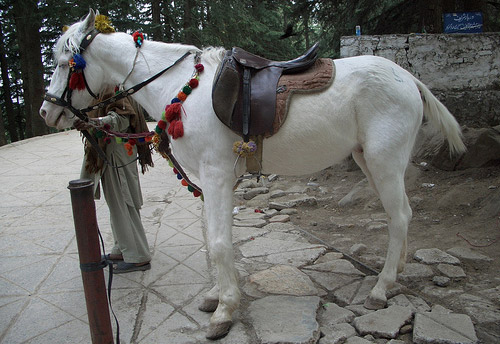
Intro
Easy to identify because of their turned in ears (similar to those of the Marwari horse), the Baluchi horse is native to Pakistan.
Origins
Thought to be of Barb descent, this breed is known for its strength, endurance and fine confirmation.
Today the bloodlines have been diluted to the point there are very few of pure lineage, making this an incredibly rare breed.
Features
Average height 14 hands
Physique
Medium sized fine head with straight or slightly convex profile
Eyes are large and expressive
Ears are long and curve inwards
Neck is long and muscular
Back is short and strong
Legs are fine and strong with good joints and defined tendons
Feet are very hard and strong
Eyes are large and expressive
Ears are long and curve inwards
Neck is long and muscular
Back is short and strong
Legs are fine and strong with good joints and defined tendons
Feet are very hard and strong
Traditional Colors
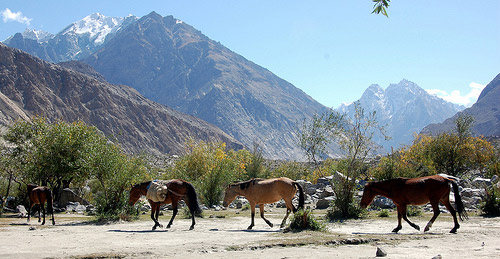
Use
Pleasure riding horse
Sport horse
Cart horse
Sport horse
Cart horse
Beledougou
Origins
The Beledougou also called the Banamba is a variety of the West African Barb (with Arabian influence) and was developed in Mali, Africa. The Baluchi horse is related to the West African Barb through the Beledougou.
There is very little information about this breed.
Banat
Intro
The Banat was a moderately large-framed quality horse which was used for draught and tractive power. This breed is now extinct.
Origins
This breed was a large light horse from the Timus Plateau of Romania. They were developed by crossing the Nonius, Noric, Ardennes, Oldenburg, and Lipitsa. They became an important animal to the local people and were used primarily for agricultural work.
Unfortunately, with the emergence of modernization techniques for farming, the Banat, among other draft type animals fell into extinction.
Physique
With the influence of so many breeds a standard was never agreed upon.
Use
Agriculture work
Bandiagara Horse
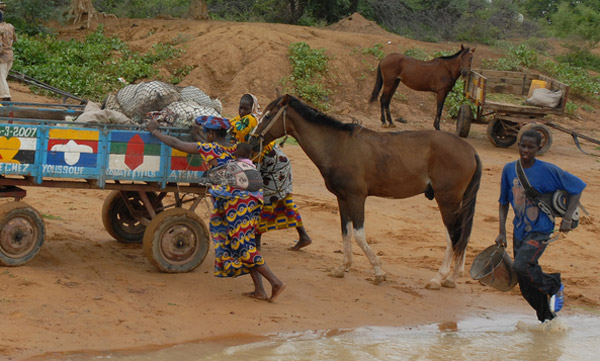
Intro
The Bandiagara horse is a mid-sized and docile horse breed from Mali and Niger in Africa.
Origins
This breed is a Barb type with fragile and lovely facial features. For the most part, this breed type is suited to the climatic harshness of the area and highly adaptable.
Features
Average height 14.3 – almost 15 hands
Physique
Neck is short & thick
Chest & shoulder are ample
Back is long with rounded croup
Tail is low set
Legs are think and sinewy
Hooves are hard & small
Chest & shoulder are ample
Back is long with rounded croup
Tail is low set
Legs are think and sinewy
Hooves are hard & small
Traditional Colors
Temperament
Spirited & bold
Use
Transportation
Cart horse
Cart horse
Ban-ei
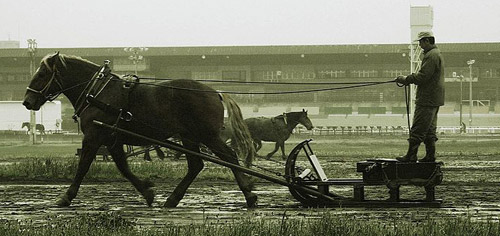
Intro
The Ban-ei horse is a blend of Percheron, Belgian and Breton blood, specifically bred in Japan for a unique type of horse racing.
Origins
Draft racing or ban-ei keiba is a race in which a draft horse pulls a heavy sleigh over hills for a total of 200 meters. The weight of the sled is the handicap and varies based on the age and track record of each animal.
There was once four draft racetracks in Japan, Iwamizawa, Kitami, Obihiro and Asahikawa. Today the Obihiro is the only remaining track and most of the horses are bred nearby in Hokkaido. Racing has been a tradition on Hokkaido since the regain was first inhabited.
Percheron and Brenton stallions are imported every year to contribute and enhance these bloodlines.
Features
14.3 – 16.1
Physique
Because of the amount of bloodline mixing there is a great deal of variation in the confirmation of the Ban-ei horses.
Traditional Colors
Solid colors
Temperament
Strong and docile

Use
Racing horses
Agriculture work
Agriculture work
Video
Banker Pony
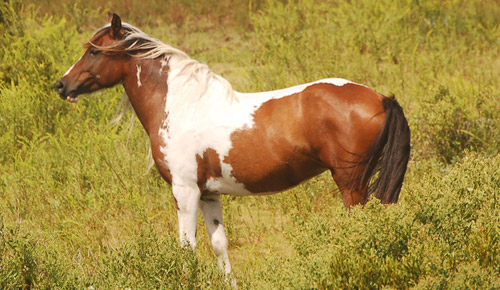
Intro
The Banker Pony inhabits the Outer Banks of Carolinas and are also calledShackleford ponies, Banker horses and Ocracoke ponies.

Origins
Believed to have been descendant from Spanish horses brought by some of the first explorers of the area early in the 16th century.
The initial bloodlines of these animals were undoubtedly influenced by English horses as well as Spanish during early exploration. However, their blood has remained relatively pure since due to their isolation
The Banker ponies have been the topic of controversy, some conservationists believe that they are destroying their natural habitat and want them removed. While animal activists believe that if the horses have always been there, they should be allowed to stay in their natural habitat.
Currently the horses on these islands are managed (similar to Assateague ponies) to keep numbers at a sustainable level by the National Park Service.
Features
Average height 13 – 14.3 hands
A tough animal with typical hardy Spanish traits
A tough animal with typical hardy Spanish traits
Physique
Head is simple with broad forehead and generally convex profile
Deep, narrow chest and short back
Often lack chestnuts on hind legs
Deep, narrow chest and short back
Often lack chestnuts on hind legs
Traditional Colors
Temperament
Docile and friendly for wild ponies
Willing to learn and easy to train
Willing to learn and easy to train
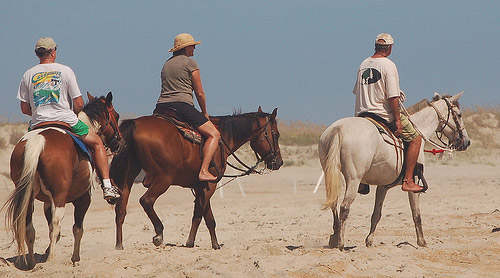
Use
Wild horses
Riding pony
Pleasure pony
Riding pony
Pleasure pony
Helpful Links
*All links open in a new window
Shackleford Horses
Ocracoke Island
Shackleford Horses
Ocracoke Island



No comments:
Post a Comment